It seems more people are working out than ever, which should come as no surprise. Since the start of the Covid-19 pandemic, around 3 in 4 people say that at-home workouts are here to stay!

Well, that’s great news for everyone’s health and wellness, but they may be missing out on some equipment at home. Fret not, as we can help with that! Let’s talk about how to build a home gym that yields results!
Determine Your Goals
First, you will need to understand what your fitness goals are so you can space out your gym correctly and purchase the appropriate equipment. This is entirely dependent on what you want out of your fitness goals.
Do you want to become more physically fit and healthy? Just lose weight? If so, your options are wide open! You can get fit and healthy with minimal space and equipment in your home.
For example, you can get fit and healthy with a mix of calisthenics and cardio exercises. You could step up your game with a pull-up bar, resistance bands, and maybe a few other small pieces of equipment, but you won’t need much.
However, if you want to become a bodybuilder and put on 12 pounds of lean muscle in your first year, then you may need more equipment. This could include dumbbells, machines, benches, squat racks, barbells, and more for the best results. Of course, all that equipment will eat up your available space.

If you simply want to enjoy your workouts and adhere to them, then you may need something in the middle. This could include an exercise bike or rower, stability balls, or whatever equipment you prefer to work with! Again, this is highly individualized.
Determine Your Budget
Your budget will be a major limiting factor in your home gym. If money weren’t an issue, you would never need to go to a gym in the first place. Ideally, you want to consider what will give you the most well-rounded results for the lowest price.
For example, if your budget is $2,000 and your primary goal is strength and size, then a squat rack and barbell are the best choice. You wouldn’t want to blow your budget on a treadmill if it isn’t your top priority.
Conversely, if you want to have a different workout every single time to keep it interesting, then you may want a variety of smaller equipment, including:
- Gymnastic rings
- TRX equipment
- Pull-up bar
- Stability balls
- Parallel bars
- Adjustable dumbbells
- Ab rollers
- Resistance bands
- Cardio machines
- A jump rope
- Weighted vest
- Slam balls
- Kettlebells

The list goes on. Whatever your goals are, determine your budget ahead of time, and don’t buy anything until you’ve added up the costs! Keep the cart full and sleep on it for a day to ensure you aren’t forgetting anything, and prioritize the most important equipment.
Remember, your home gym setup doesn’t need to be overly complex or expensive. In fact, starting small is he best course of action. Once you determine you “need” something you can always add it later. Provided of course, you have the room for it…
Determine Your Existing Space
This is the last piece of the puzzle before you can begin designing your home gym, and you need to be accurate with your dimensions.
Grab a tape measure and measure the dimensions of your space, including the height. Height is important if you intend to put up pull-up bars or hang any equipment from the ceiling (safely!). These measurements are essential when shopping for equipment to ensure that everything will fit.
Personally, I would sketch out the space on a piece of paper or on your computer or tablet. Then add in the equipment you would like in your gym. This gives a general idea of what does (and doesn’t) fit well in your home gym space.
Also, don’t forget to measure your doors. The last thing you want is to assemble a squat rack and then not be able get it into the room.
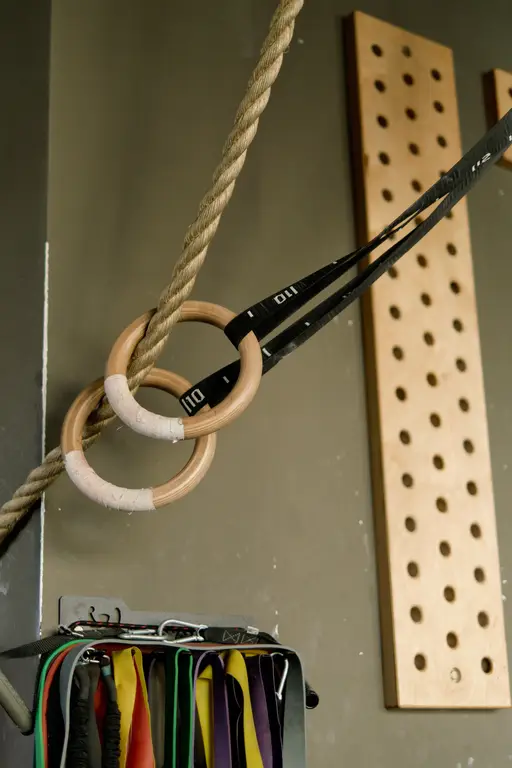
As you shop, continue to measure out and plan the space for the best results. Otherwise, you’ll run out more quickly than you think.
Rules For Building a Home Gym
Before we get into the details, let’s briefly discuss some general principles to follow when building a home gym. Here are a few to keep in mind.
Remember Safety
Safety is the most important aspect of a home gym, as working out can be dangerous (although it generally isn’t). Especially if you are going to be lifting weights alone, you will need to consider safety when purchasing equipment.

For example, a bench or squat rack will need safety bars, barbells and free weights will need clips, and you will need to understand the weight limits of your equipment before purchasing. Always remember to follow best safety practices when working out at home! And if you do happen to get injured, make sure you rest up so you can get back to training asap.
Keep It Appealing
One aspect of a home gym is to keep it as appealing as possible. Working out for two weeks won’t do anything for your long-term health, but making exercise a lifelong habit will. Just because it’s in your home doesn’t mean you will use it.
Whatever motivates you to get in and work out, use it to your advantage. This could include budgeting for a high-quality speaker system, a television, a heating system, or something else. If you give yourself a reason not to work out, there will be days when you’ll take it!
Make It Worth Your Budget
There is no one answer to the question “does a home gym save money?” On average, yes, but only if you plan it correctly. If you’re currently spending $40 a month on the average gym membership and you plan to work out for the next 40 years, then any budget under $19,200 will theoretically be worth it!
And that doesn’t even include the time and gas savings (and inflation!) from not having to drive to the gym. That said, a home gym doesn’t have to save you money if that isn’t your goal, but simplicity is a good rule of thumb upfront. If you want to add more to it later, there’s no harm in that!

The best way to limit your budget is to think of what you will actually use. A medicine ball or squat rack may sound great, but will you actually use it at least once a week? If not, then you may want to hold off.
Another way is to buy used equipment if you can, but only from trusted sources. However, certain equipment like weight plates are quite expensive to buy new, and you can easily verify their integrity with a scale. On the other hand, you may want to buy weighted vests or resistance bands firsthand.
Buy Quality Equipment
Sure, cheaper equipment will help with your initial budget, but high-quality equipment will save you in the long run. If the difference between $40 and $50 gymnastic rings is 20 years of life, then it’s well worth the extra price.
You can read online reviews from previous customers (or check out our reviews) to see how long the equipment typically lasts. Do you really need to do that for a $10 jump rope? Probably not but it is essential for the more expensive pieces.
Ditch What You Don’t Need
You don’t need everything in a professional gym to have a successful home gym. For example, many gyms have specialized hack squat machines. Why would you use that when you can just, ya know, squat? Even if you can’t do a back squat, there are tons of squat variations you probably can do including an easy-to-learn landmine squat.

Moreover, would you need to buy a high pullup bar for your TRX setup if you can easily set it up on a tree branch or exposed rafter in your garage? While these are only a couple of examples, there are many that likely apply to you specifically. What are your goals, and what do you actually plan to use that you can’t replicate with the equipment you already have?
Another thing you can do if you’re handy is to just build your own equipment. For example, you can build a plyometric box – which has a lot of uses in a home gym – rather easily. The same goes for push-up bars, weight vests, and other smaller items.
How to Build a Home Gym
Now that you know some of the general rules to follow, we can start preparing for our build. Now, obviously, you need to figure out where to put your home gym. Do you want a garage gym? Or do you prefer a basement gym? Maybe you have a spare room? Obviously, your limitations and preferences are going to dictate the ideal location but virtually any space can work.
So here are the steps to build a home gym in any space in your house!
1. Lay Flooring First
Remember that the first thing that needs to go down in your gym is your flooring. Gyms typically use different types of rubber flooring for the weight sections, but you can use whatever you want. Just keep in mind that heavy weights will damage hardwood or laminate flooring.
Also, cement flooring can crack if you drop your metal weights. If you are using cement, we recommend laying something down. You can find reasonable home gym flooring at places like Sam’s or Costco. No warehouse store close? I’ve even see horse stall mats being used as home gym flooring.
While they won’t protect your floor – from a comfort stand point – even mats or old carpet scraps are better than bare cement!
2. Consider What You Already Have
You may already have some home gym equipment, which you can use to your advantage. At the very least, you have your body and gravity. You can optimize this dynamic duo by purchasing versatile, space-saving equipment that allows you to use your body weight to its full potential.

For example, there’s a reason why TRX suspension systems are the most popular home exercise equipment. They are lightweight and barely take up any space while offering endless opportunities for exercise. This isn’t the only example, but just keep this in mind.
3. Prioritize Large Equipment
Okay, you’re adding a squat rack, treadmill, and calisthenics station into your home gym. This will likely be your largest home gym equipment, so these should be your first priorities. Space them out from each other and plan around them from there.
If you find that your space is too constrained after these first pieces, consider prioritizing further and eliminating one, or finding another space for a large item. For example, if your home allows for it, a separate “cardio room” elsewhere can help ease the clutter!
4. Plan For Medium-Sized Equipment
Now that the big items are out of the way, it’s time to plan for the rest. Ideally, you want to keep these items closer to the walls to keep a more open floor space. A flat bench or an adjustable bench are great items to incorporate into your design.
However, you have to work with what you have. Take a look at your existing space and mark where your largest equipment will go. From there, add in any remaining stationary equipment.
5. Organize Small Equipment
Create a system for organizing your smaller equipment. This shouldn’t be too difficult or overly complicated. All you need is a cabinet, toolbox, or literal boxes to keep your small equipment away so you don’t trip all over them. You can just simple hooks to hang jump ropes and other smaller items.
If you have heavier small equipment (kettlebells, medicine balls, etc.), then either keep these on the floor or on weight-bearing racks. Try your best to organize these for both safety and enjoyment in the room!
6. Don’t Forget Floor Space
Sure, in the summer you can just go outside, but what about during the winter? Also, do you really want to feel cluttered in your home gym? We know that we don’t.
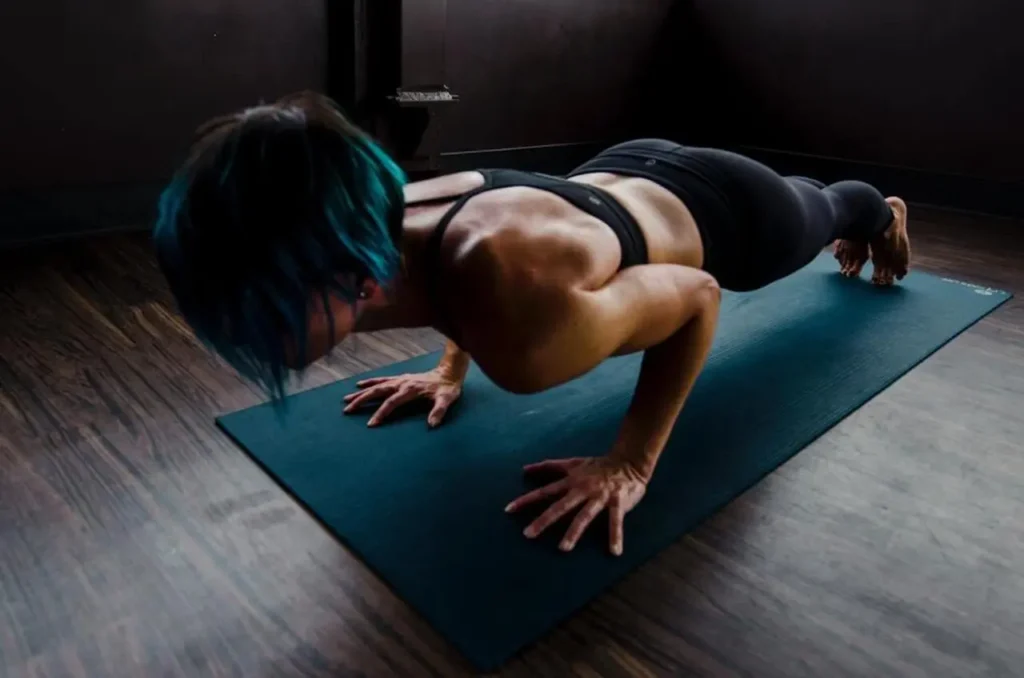
Planning ahead for optimal floor space is essential because, well, a lot of fitness requires the floor. While there’s no right answer to how much space to leave, I recommend at least one large open space for your weight training.
Remember, there are thousands of exercises you can perform with just your body weight and gravity, so keep an open space for push-ups, handstands, jump ropes, burpees, yoga, or whatever you want!
7. Look For Space Savers
Consolidating your equipment without sacrificing any space or money is the best you can do. For example, if you insist on having workout machines, try buying an all-purpose machine to save space. Some machines allow for lat pull-downs, chest flyes, rows, and more, all in one machine.

Conversely, you can also try a recumbent bike that doubles as a rower, as this can save substantial space for your cardio equipment! Adjustable dumbbells can eliminate the need for a full dumbbell rack to take up your wall. You can also easily store a foldable weight bench.
These are just a few examples, but keep this principle in mind when shopping. However, some of these “space-savers” can come with a drop in quality. It’s always best to read reviews from previous customers before buying them!
8. Add Lighting and Mirrors
Gyms use bright lights and mirrors for a reason. It’s good to analyze your form while you work out, and it helps boost morale when we can see our progress right before our eyes.
Now, you don’t have to go all-out on lighting, but adding in some high-quality LED lights can make a world of difference. It’s hard to get sleepy when it’s so bright, but it sure can get cozy and tiring with a couple of incandescent lamps!
Mirrors are essential. You don’t need to spend thousands of dollars lining all of your walls with mirrors, but adding a couple in strategic locations is very beneficial. Try to place them in view of an exercise you may struggle with on form for the best results!
9. Keep It Personal
Finally, it’s time to add your own personal touches to your home gym. This can include posters, decorations, inspirational quotes, or whatever you want. It’s your gym, so make it your gym.
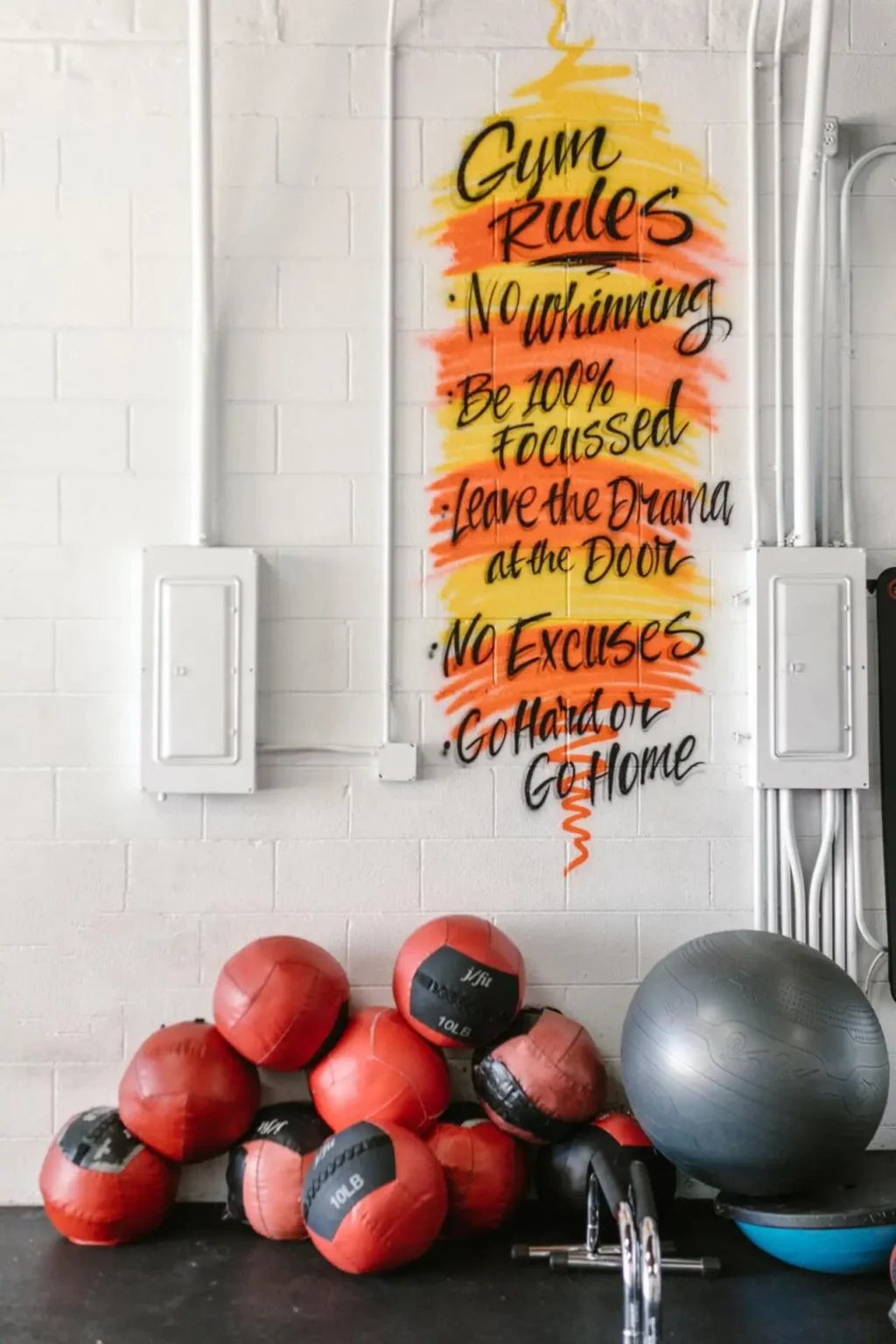
The details here are entirely up to you, but we highly recommend adding your personal touch. It can boost morale and make you feel more comfortable while working out, which is important for adherence. Also, you’ll get to show off your awesome home gym to guests!
Fitness Equipment Buying Guide
Finally, let’s go over some tips on buying equipment for your gym. Unfortunately, there is a lot of junk and less-than-reputable information circulating in the fitness industry. Here’s what you need to know.
Buying Barbells and Weight Plates
Needs for barbells and weight plates will vary widely between different users. A female looking to get in shape may have entirely different equipment needs from a male powerlifter. In these examples, someone may only need a simple standard barbell, whereas the powerlifter will certainly need an Olympic barbell.
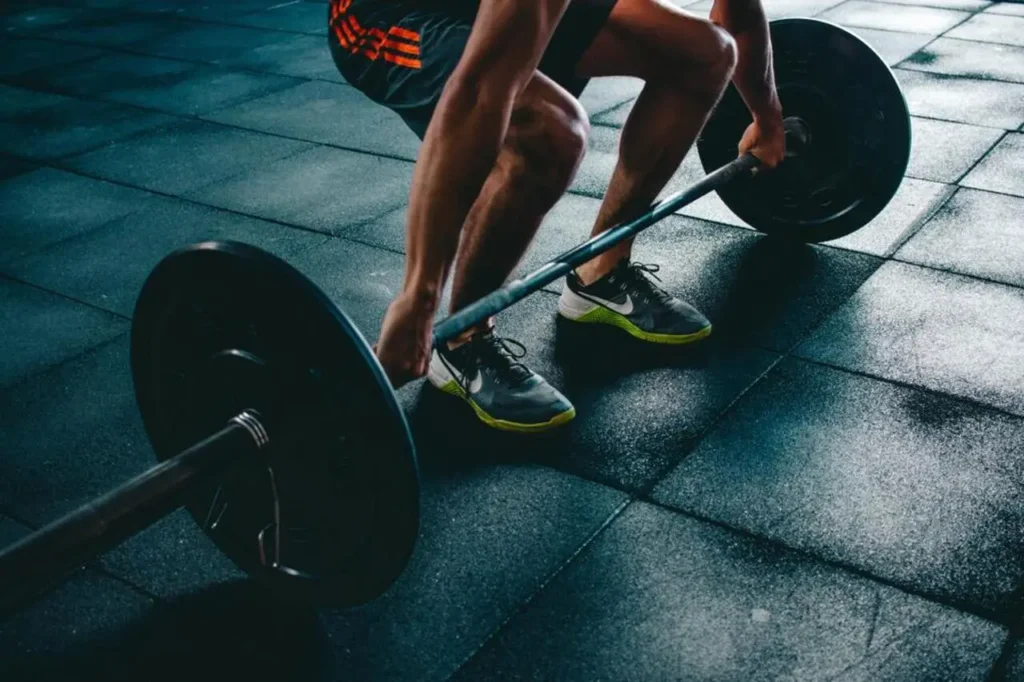
Conversely, someone looking to build muscles for the summer may want an EZ curl bar. There are a lot of options here to choose from.
When in doubt, buy a bundle. You can save money by getting the barbell and plates together, especially if they’re used. An Olympic bar will cost more, but it will last longer with heavy use, and it won’t break when you put heavy weights on it for deadlifting.
Overall, consider your needs and limitations when choosing a barbell to find the best deal. Just remember that you typically get what you pay for!
For weight plates, choosing between metal and bumper plates is challenging. Bumper plates may be more expensive, but we’d generally recommend them in a home setting, as they are less likely to damage your space! Still, this is entirely up to you!
Buying Squat Racks
Squat racks or power racks are not an item to skimp on, unfortunately. It will almost certainly be the most expensive item on your list, and that’s the way it should be. However, you can kill a few birds with one stone in this purchase if you do it right.

For example, you can buy a squat rack with safety bars and a pull-up bar on top. This eliminates your need for a full weight bench for bench pressing, a pull-up bar for pull-ups (or bar dips, muscle-ups, etc.), and a rack for squatting, pressing, or jerking. The vertical bars can also serve as a stationary hold for resistance band training, battle ropes, and more.
This is your biggest space and budget eater, but also your biggest space and budget saver if you do it right. Always read reviews on squat racks before purchasing, and verify that the weight capacity is more than sufficient for your strength.
Buying a Weight Bench
Weight benches for home gyms need to be portable, sturdy, and foldable for the best results. Foldability will help with storage, but you need it to be strong enough to hold your weight along with any other weight you add on.

What’s your current bench press? What do you want your bench press to be in 5 years? Add that to your weight and that’s the minimum capacity for your bench.
Also, you want the ability to fold it for incline and decline presses if you want to maximize your muscle growth. Still, you have to balance these factors with price, consumer ratings, and size. A little research will go a long way!
Buying Cardio Machines
More than 50 million Americans use treadmills regularly. If all you need is a standard treadmill, you can probably find a used one online for a negligible price, assuming you can pick it up. However, if you have more specific needs, then you should look for equipment that offers them.
For example, a treadmill with incline options can help step up your running game. A stationary bike with multiple settings can help you vary your workouts. If you’re on the rowing team – or just want some challenging cardio – a rowing machine can really help improve your performance.

Regardless, make sure you know the features of the machine before you buy it, and always check reviews for quality.
Buying Smaller Equipment
Honestly, if your $10 ab wheel or $7 resistance band breaks, it’s not the end of the world. Still, we recommend reading reviews from previous customers before buying.
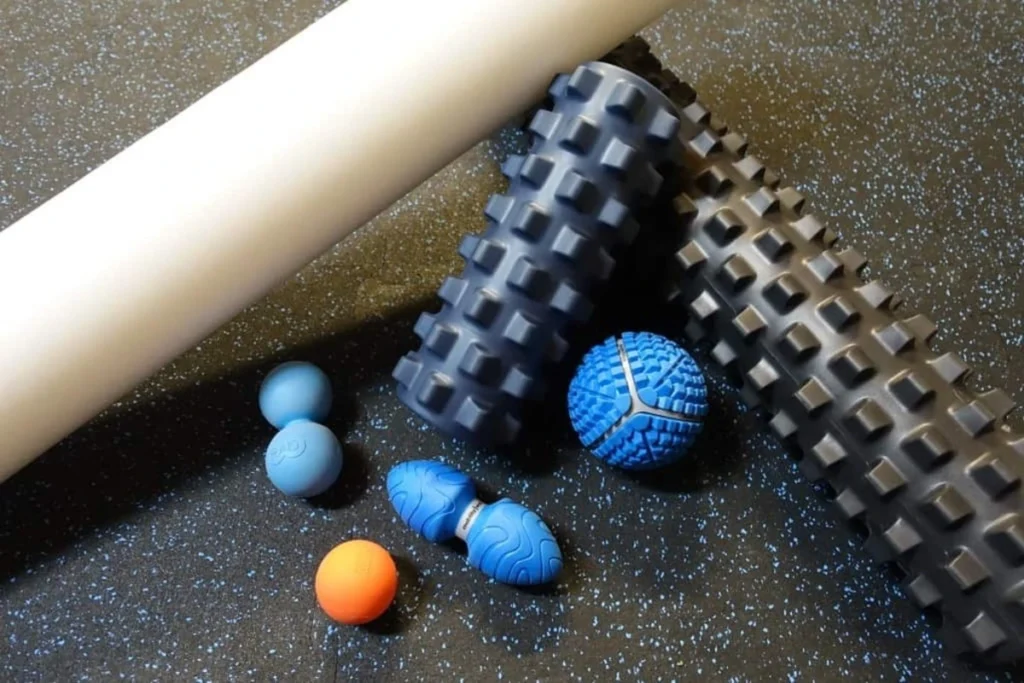
One piece of smaller equipment that often needs attention is your dumbbell setup. Again, we strongly recommend using adjustable dumbbells for a home gym, as they save the most space.
Unfortunately, there are always companies promising the latest and greatest dumbbell solutions, and it can be challenging to find what really works. Check out our best adjustable dumbbells to see some of the top options on the market.
Don’t Be Afraid of Used Equipment (With Limits)
If you’re really looking to stretch your dollars and build your own home gym, don’t be afraid to buy used equipment. For example, you can sometimes find old equipment from commercial gyms, as they replace or add new items. In addition, Facebook Marketplace, eBay, and second hand stores can all be great places to check.
One caveat here: be careful with used cardio equipment. They only have a certain life and many times they are not maintained very well.
Final Thoughts
Now that you know how to build a home gym, put these tips to good use today and build the personal gym of your dreams. Always keep an eye out for scams, consider your budget and space, and get the right equipment for your fitness goals. The sooner you do, the sooner you can enjoy a full workout routine in the comfort of your home.
Stay up to date with our latest fitness product reviews, and check out some of our supplements to help you reach your goals even sooner!







